Objection handling: Tips from an SDR on how to overcome sales objections

Sales Development Representative

Tags
Share
Sales objections are a salesperson's arch-nemesis, but they come with the job. Prospects can be naturally suspicious, tight on budget, not in a buying cycle... There’s no shortage of objections that you’ll face on a daily basis.
As an SDR (Sales Development Rep) in B2B sales, I do a ton of outreach and hear all of these objections—and many other ones too—every single day. So, what’s the best way to handle them? In this guide, I’ll walk you through some of the most common sales objections, tools that can help, and my best objection handling tips.
But first things first, let's get one important thing out of the way.
The biggest misconception about handling objections
... Is that it all ends at “no.”
For example, if a prospect tells you they aren’t actively evaluating solutions right now, don’t just leave it at that. Your best rebuttal strategy here is to ask a follow-up question and get them talking about their current system—they probably have opinions about that, and that’s an important opening that not only lets you continue the conversation, but also better understand what they like and dislike about what they’re currently using.
This is a crucial first step that you have to master—you’ll hear a lot of “no”s upfront when prospecting, and you have to be ready with a good rebuttal instead of just hanging up or giving up.
The 4 types of customer objections in sales
It can be difficult, especially for junior sales reps, to distinguish between a true objection and a smokescreen objection, which obscures the real reason the prospect is hesitating. This usually boils down to one of the following reasons:
1. Price objection (lack of budget)
“It’s too expensive” is probably the most common type of sales objection you’ll hear. And when you do, it’s oh-so-tempting to reach for the discount—but wait.
When a customer says your product is too expensive, what they really might be saying is that the financial risk is too high, or that it sounds expensive based on, well, nothing really—the number just sounds expensive to them.
This is where you need to justify the price with value and focus on how your product addresses your customer’s pain points. You can use templates or key messaging provided by your sales team here, but to really be successful addressing pain points, you have to tailor this messaging to the prospect. For example, your product’s AI functionality being unique and/or the best might be a key message—but how does this solve your prospect’s biggest irritation?
Remember, value (almost always) trumps price.
We use Dialpad as our sales communications platform, and its Custom Moments and RTA cards features specifically are super helpful for these pricing objections. We can track how often “price” or “cost” gets brought up on calls by creating “Custom Moments”:

From there, we can dig into those call recordings and transcripts (generated in real time by Dialpad Ai!) to understand more of the context behind those conversations:
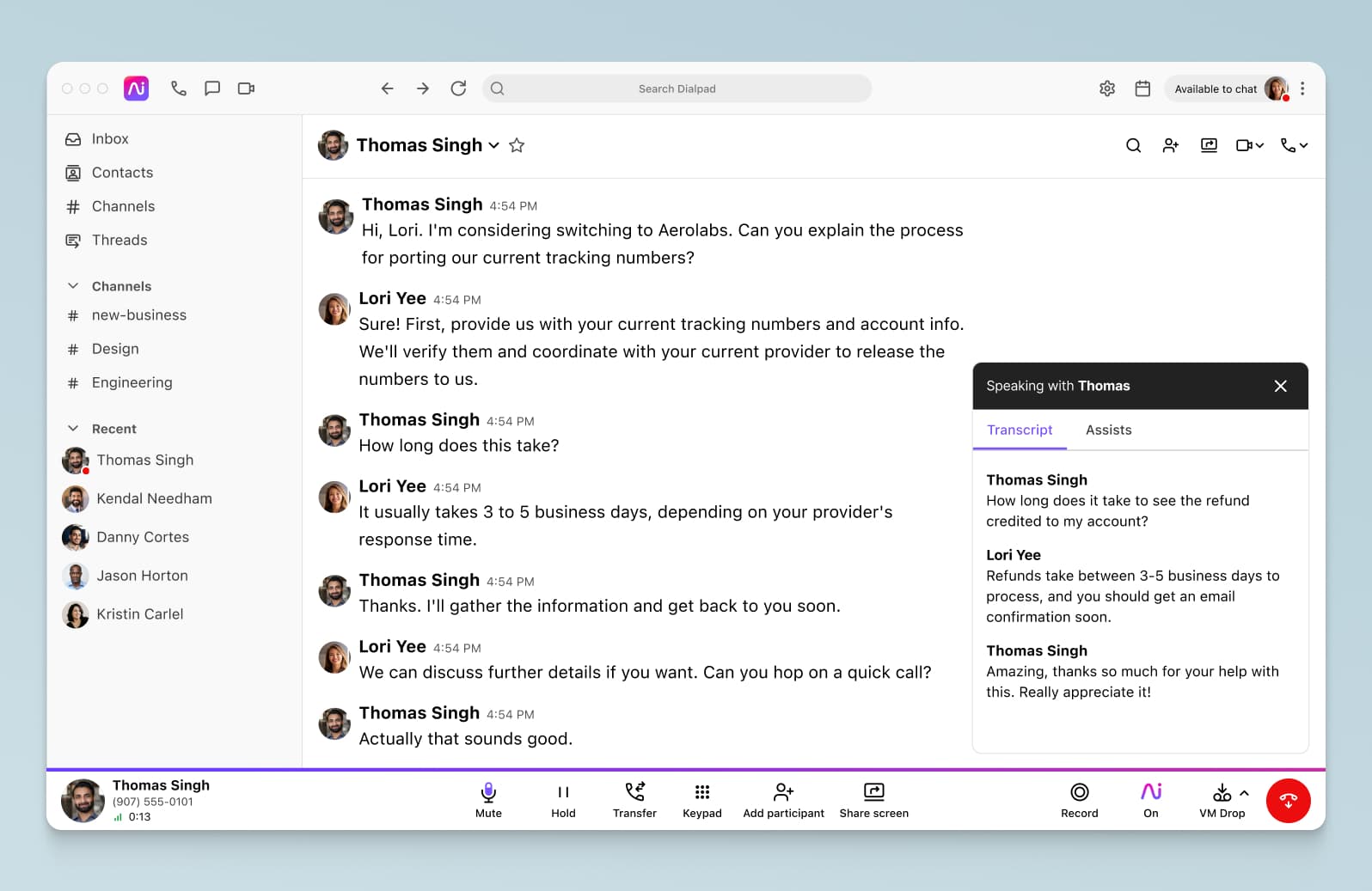
Finally, our sales leaders can then create RTA or Real-Time Assist cards with tailored notes (almost like objection handling scripts) based on those insights—and set them to trigger on our screens whenever “price” or “cost” is spoken on a call, in real time:
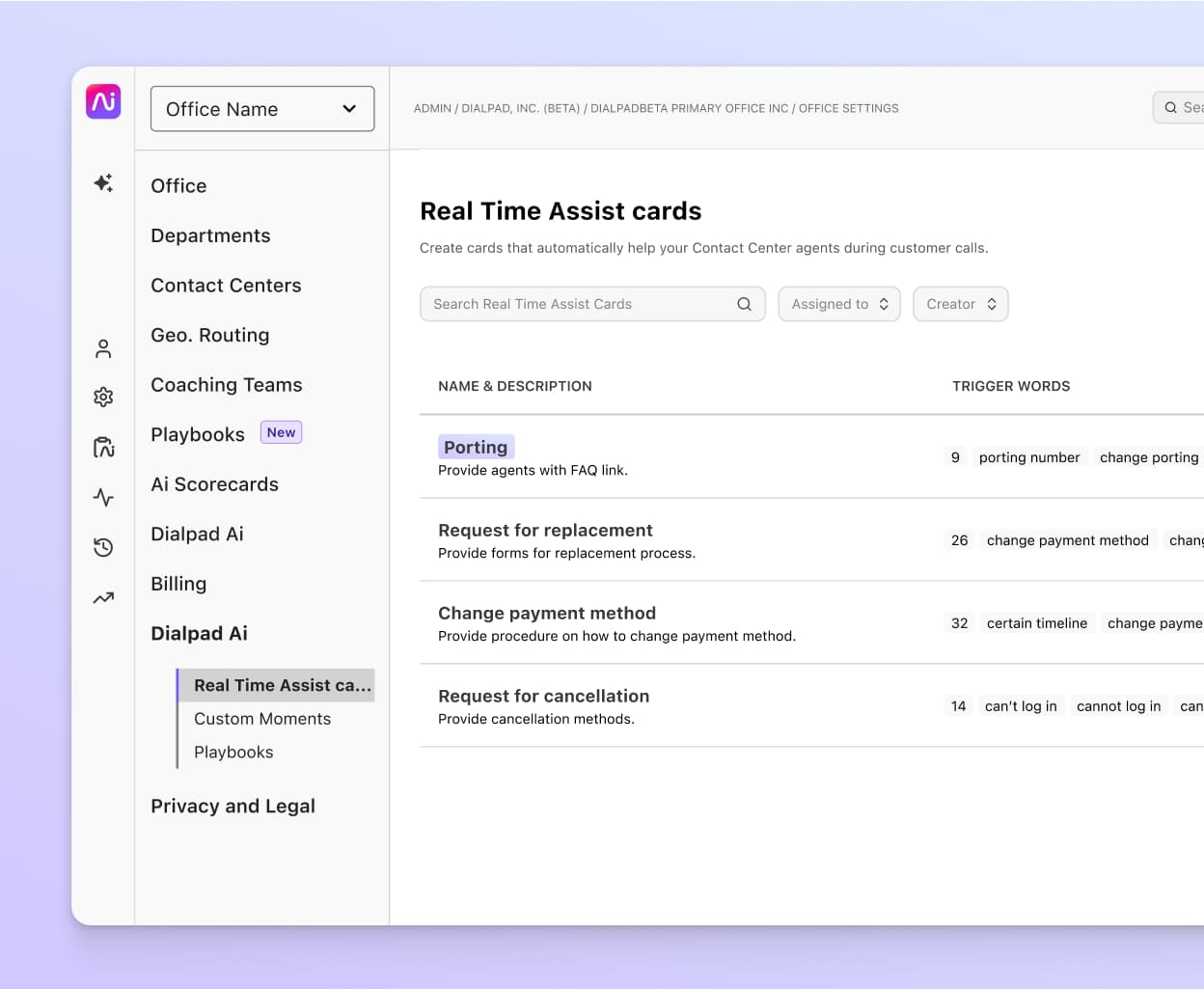
This way, we have all the ammunition we need to tackle objections in real time while talking to prospects, without pinging our managers for advice every single time.
(Of course, there’ll be customers who genuinely lack the budget. Instead of pushing the sale, try directing them to a more cost-effective solution.)
Another helpful feature that our sales team uses is Dialpad's Ai Playbooks, which automatically suggests questions and phrases that sellers need to say during a call (for example, asking about budget or purchase timelines), understands whether the behavior was met, and checks the task off the list on your screen:
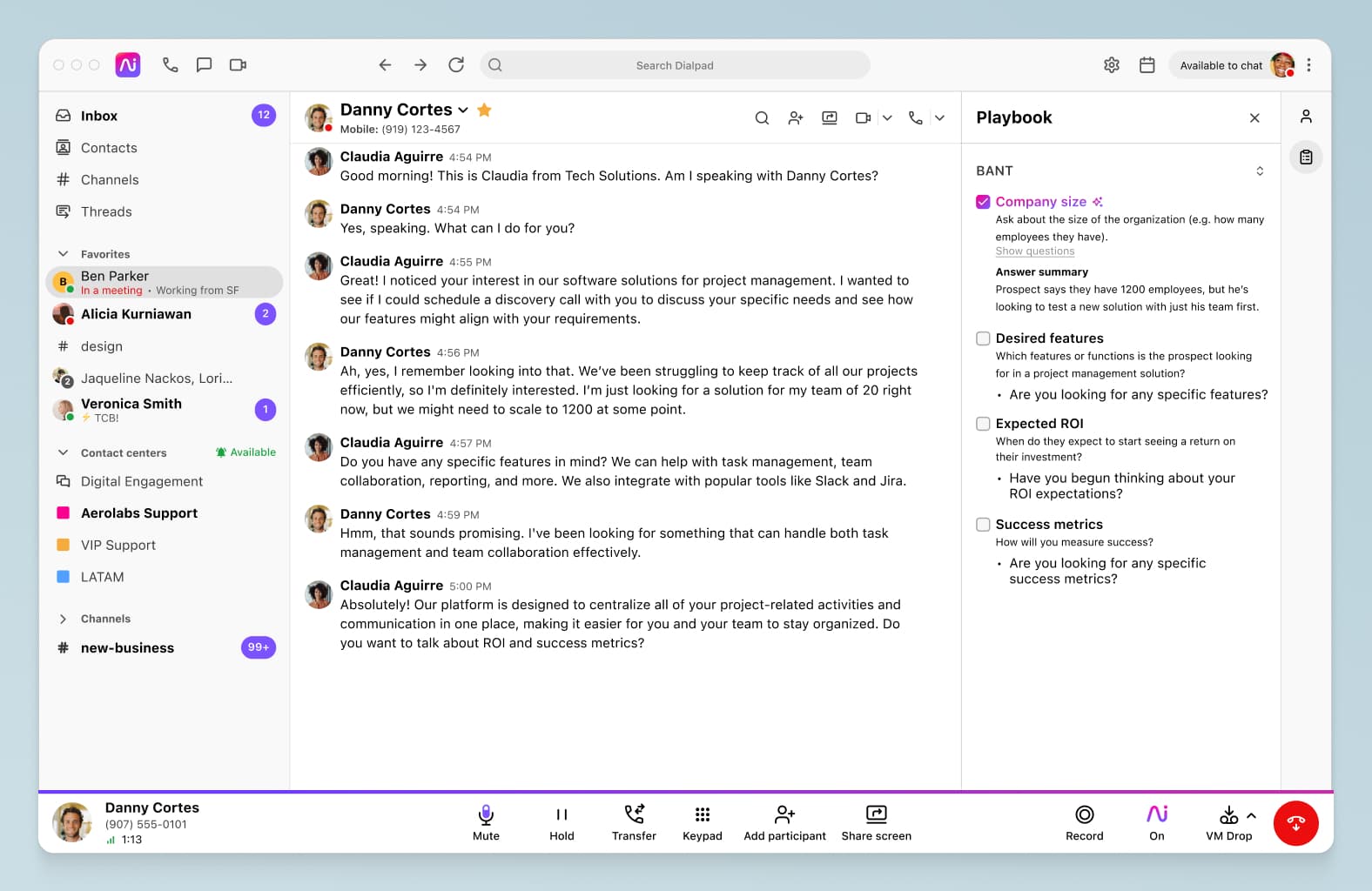
It helps reps follow their org's sales methodologies (like BANT, SPIN, and SPICED) more consistently, and can quickly tell you if there's anything that can be improved on calls—before managers even come to you with their feedback.
2. Product objection (lack of trust)
Often, “But your product doesn’t do/have XYZ” is a customer objection that may stem from a lack of trust or understanding of your product.
(Unless your product really doesn’t do that thing and they need it right now—then you can’t really do much.)
If that’s not the case though, then when a prospect comes to you with a product objection, your rebuttal should mitigate their doubts and build trust by providing the information they need to evaluate your product’s performance and credibility. This could be a product demo specific to their use case, case studies, customer testimonials, and so on.
3. Contentedness objection (lack of need)
“I’m happy with my current product right now” or “I don’t think we need a product like that” are sales objections that express a lack of need. Often, I find that prospects who say this are just trying to give you the brush-off and they haven’t actually thought carefully about whether or not their current solution is really doing what it needs to.
This is a trickier objection to try to start a sales conversation from, because you have to really get your prospect to think deeply about any little dissatisfactions they have with their current solution—which they probably have never done before you came into their life.
Try open-ended questions like, “What do you like or dislike about your current product?” or “What current challenges do you face regarding XYZ?” To be honest, though, templates won’t be much help to you here. Sales teams always teach you that “listening is important,” but that’s especially true here.
Your prospect thinks they’re content with the solution you’re trying to replace, and you have to listen well to find those nuggets of gold that suggest there are small things that maybe your product could do better. Often, it won’t be obvious.
Because these are some of the trickiest conversations, they’re also really valuable because they make for the best objection handling lessons. In Dialpad, we can create playlists (like in Spotify) of the best sales calls we’ve had, and share them with the rest of the team so everyone can learn and improve on their own:
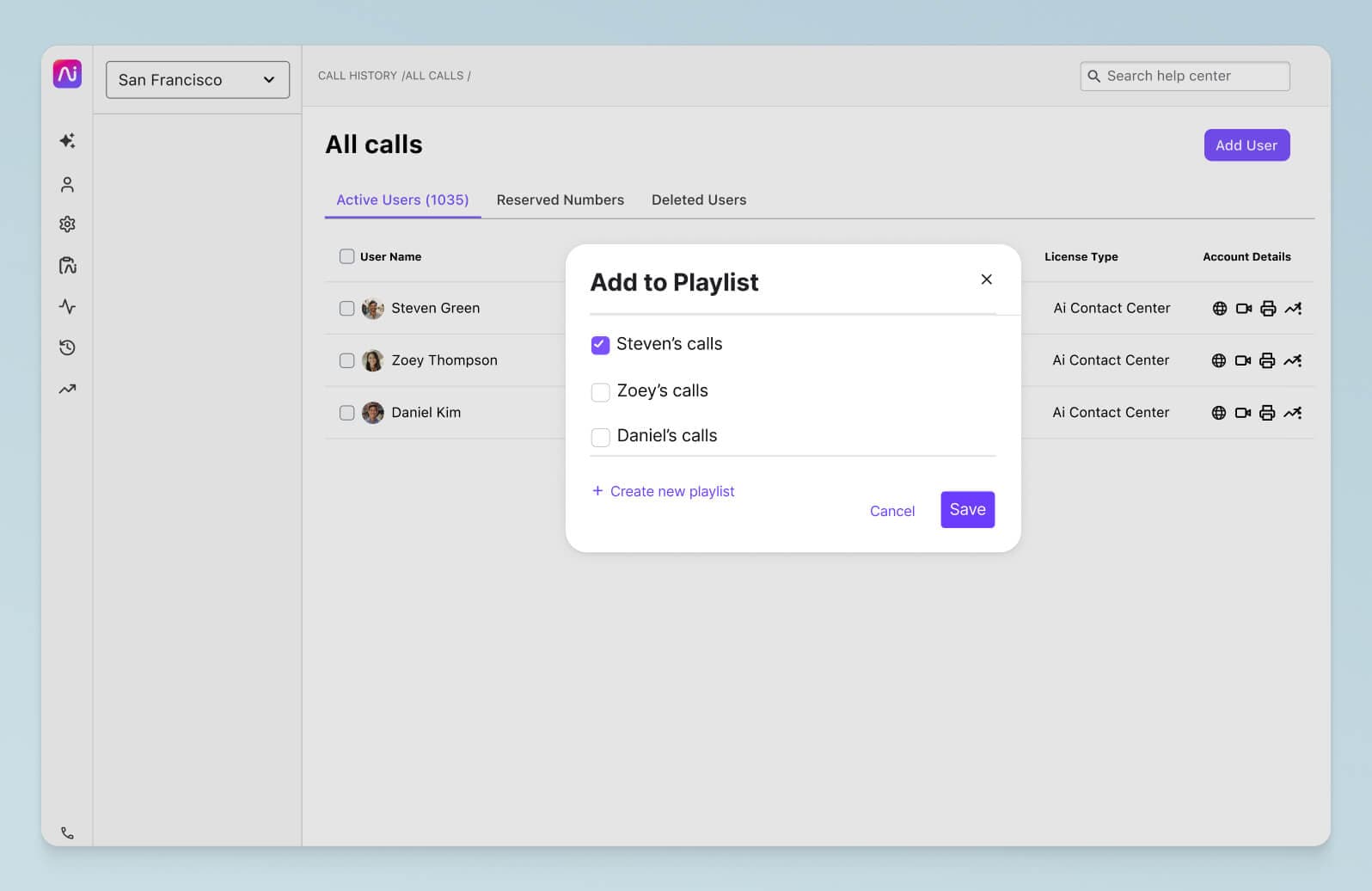
4. Time-related objection (lack of urgency)
“Now isn’t a good time.”
“I’m not looking to solve XYZ right now.”
“I’ll have a think and get back to you.”
Does your customer have legitimate timing constraints or are they just trying to get rid of you? Instead of taking time-related objections at face value by default, delve into why the customer doesn’t have time to solve the issue.
Are they prioritizing another problem that you can help with? Does their industry have a specific buying cycle that they have to follow? (For example, educational institutions have very specific times during the year where they’ll be buying software, so in these cases I’d just schedule a follow-up reminder in my calendar.)
I always like to ask prospects if I can send them an email with material about our products. I find it most effective if I ask them which material is most relevant to them, whether it be integrations or compatible hardware. I’ll then ask them if I can send over an invite down the line to get their thoughts about that sent material—low pressure and low commitment, which generally gets good responses.
4 common sales objections (and how to tackle them)
1. “I’m not the right person.”
Ask them who is a better person to reach out to, then leverage this contact to find out who the real influencers and decision-makers are. (They might still be an influencer even though they’re not the decision-maker!)
Don’t be afraid to name-drop here—with permission. For example, if I speak with a CEO and they tell me the right point of contact, I’ll ask them if it’s okay to name-drop and let the contact know I was sent their way. That way there’s some relevancy and some degree of perceived support for when you reach out to the next person!
2. “We already have all the tools with multiple services.”
This may be true (ask some follow-up questions to make sure it’s actually true first), but even if it is true, are they getting all those things they need in a convenient way?
For example, we get this objection a lot—prospects will say, “Oh, we already have a video conferencing app and an instant messaging app and a phone system.”
But one of Dialpad’s biggest benefits is that it has all of those things—and even SMS/MMS messaging and contact center technology—in a single beautiful platform:
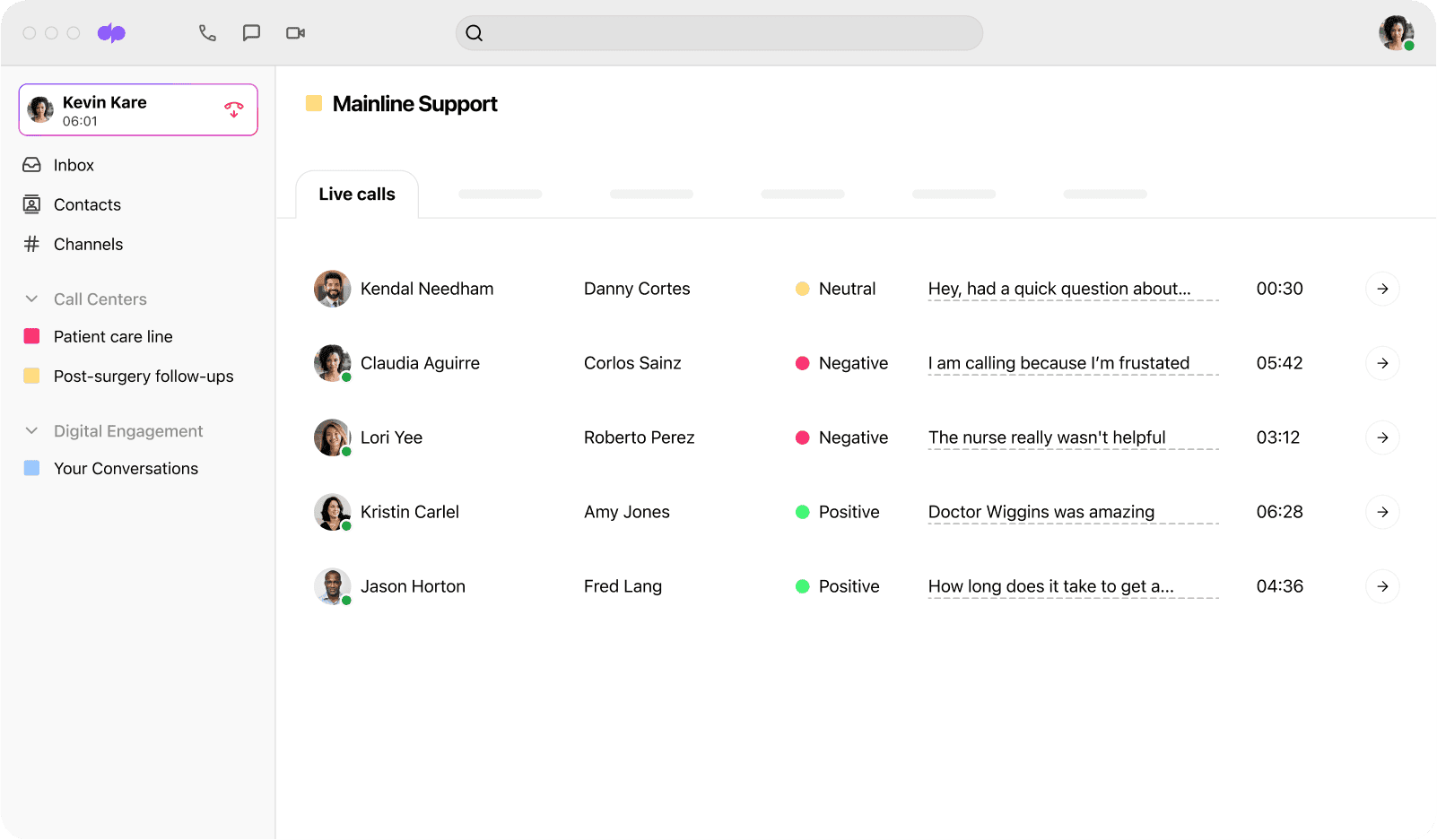
For those prospects, that means a much easier piece of software to admin (because their IT teams won’t have to manage five or six different apps), and also significant cost savings, since they’re not paying for multiple tools.
With that rebuttal, this becomes a much different conversation with the prospect... Even though they said that they “already have everything they need.”
3. “Now’s not a good time.”
Find out why it's not a good time and if it truly isn’t, make a note in your CRM to follow up during their evaluation cycle.
Fun fact: Dialpad integrates with a wide range of CRMs like Salesforce, HubSpot, and Zoho CRM, which is great because not only does it embed its CTI dialer inside those CRMs to let us make calls without toggling between different apps, it also automatically logs activities like calls and texts to prospects’ records. Here’s how the integration looks in HubSpot, for example:
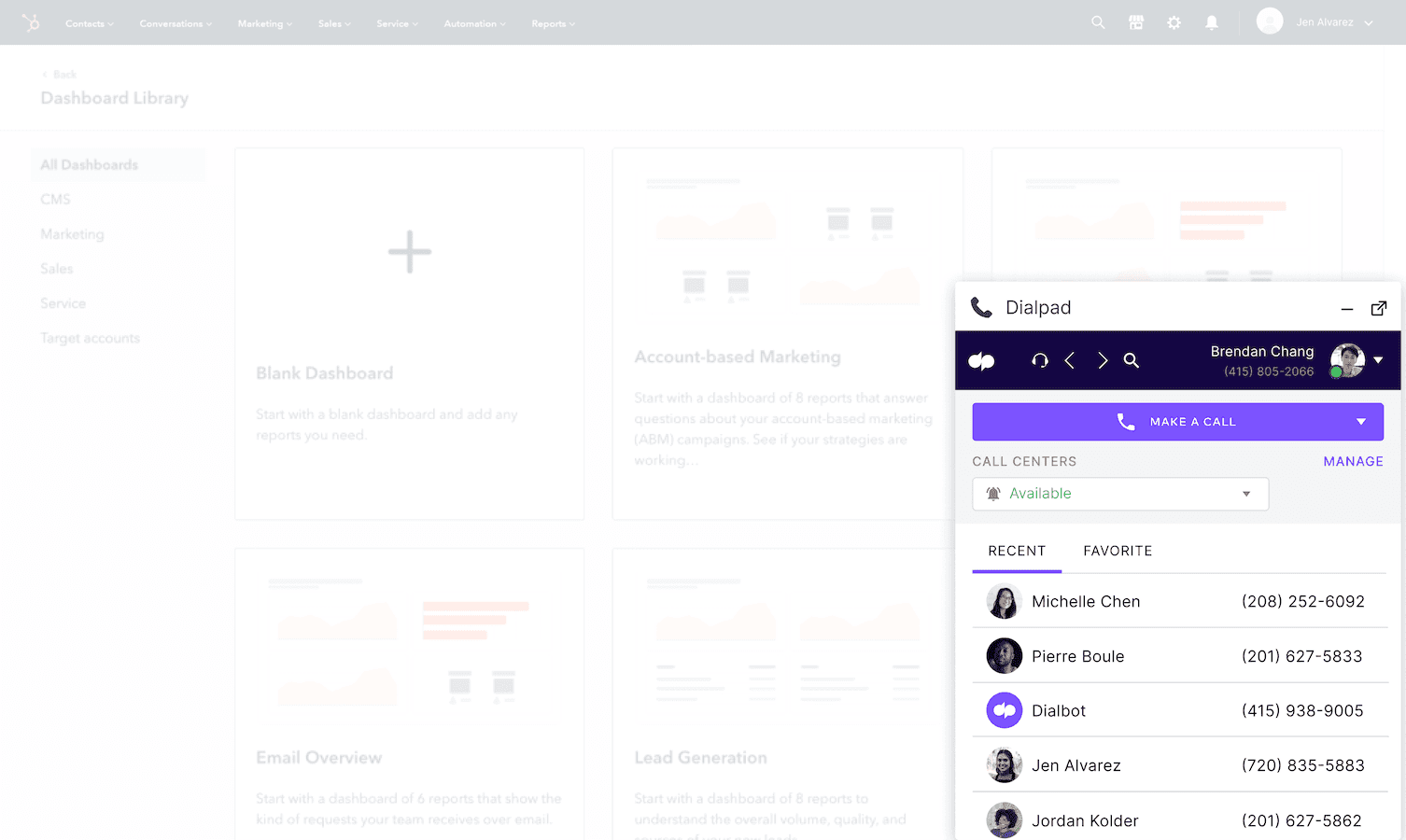
Automations like these save us a ton of time.
4. “We just don't have the budget for a switch.”
When you hear this objection, ask yourself if you've truly proved the value of your product or service during your pitch. It's possible that your prospect just doesn't understand the value in what you're offering and is rejecting it based on that.
Instead of going for a straight-up rebuttal, try to pry a bit further by asking them what price they might put on say, 25% more sales per month or another relevant metric that you believe your solution can impact.
Your goal here is to get their wheels spinning about your value proposition and to think about “price” in a different way. Yes, your solution might cost $25,000 a year, but what if it saves them $100,000 a year, or helps them win $250,000 more in deals? No exec team would turn down the “cost” of buying that solution.
How to overcome sales objections in 6 steps
The more information your prospect gives you about their current situation, problems, and goals, the more information you have to prepare a good pitch or rebuttal that clearly shows the value of your product.
Step 1. Pause
After your prospect has objected to your pitch, don’t be afraid to pause. You don't want to make things feel rushed for the prospect, and this gives you time to collect your thoughts as well. You can quickly scan your templates to see if there’s a possible response you can pull from there, and if not, you can come up with a strategy for your rebuttal. (Maybe use one of the tips above!)
Step 2. Ask questions (keep it conversational)
Instead of aggressively hounding your prospect with more info, try asking a question or two in order to understand their objection better. Asking the right questions can make a big difference—not only does it help you reset and slow things back down, it also turns this back into a two-way conversation that’s focused on your prospect’s needs instead of just a sales pitch.
Step 3. Determine what the objection really is
Before you can challenge a prospect’s objection, you have to know what you're up against first. Ask your prospect, "If we worked through that, what other challenges would we be facing?" This question demands an answer and helps you identify potential deal breakers.
Step 4. Ask for approval (be conciliatory)
Ask your prospect if you can share some ideas or observations about their business with them. This seems like a small act, but it puts them in the driver's seat without putting a ton of commitment on them. You’re not asking for the sale, just for permission to share some ideas—very few people in my experience will say no to this.
Step 5. Reframe (gently move the conversation your way)
Next, change your buyer's perspective by helping them see right now as the best time to improve their situation. You can also turn a perceived weakness into a strength. Reframe the conversation to get your prospect to think differently about your product.
Step 6. Ask for closure (and keep the conversation going if you’re not there yet)
Point blank ask your prospect if you've answered their concerns. If they say yes, then you can move the deal forward, whether that’s closing the deal or booking a follow-up meeting.
Objection handling at its best with Dialpad
Dialpad’s unified communications platform gives us an app to make phone calls, have video meetings, send messages—and there’s even a sales dialer—all designed to help sales reps navigate prospects seamlessly through the buying process.
Not only does Dialpad Ai transcribe sales calls in real time, but it can also do live sentiment analysis and pop up Real-Time Assist cards in real time to help us ask the right questions and handle objections, all live on the call with a prospect.
For salespeople, whether they’re AEs, SDRs, or BDRs, this makes it much easier to handle objections. See how it works!
See how we book more meetings + close more deals with Dialpad
Get a personal walkthrough of how Dialpad Ai Sales Center works, or take a self-guided interactive tour of the app first!








